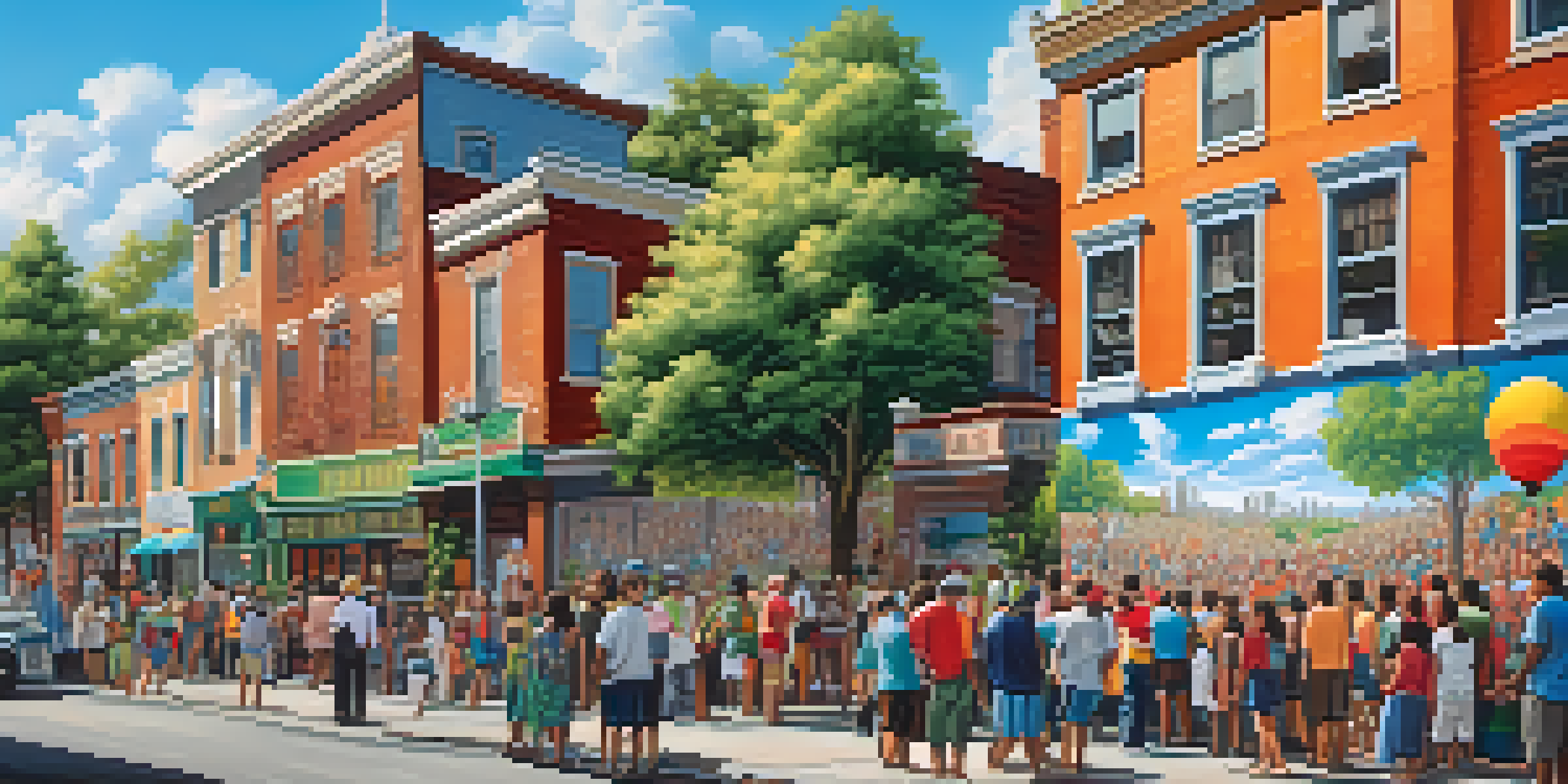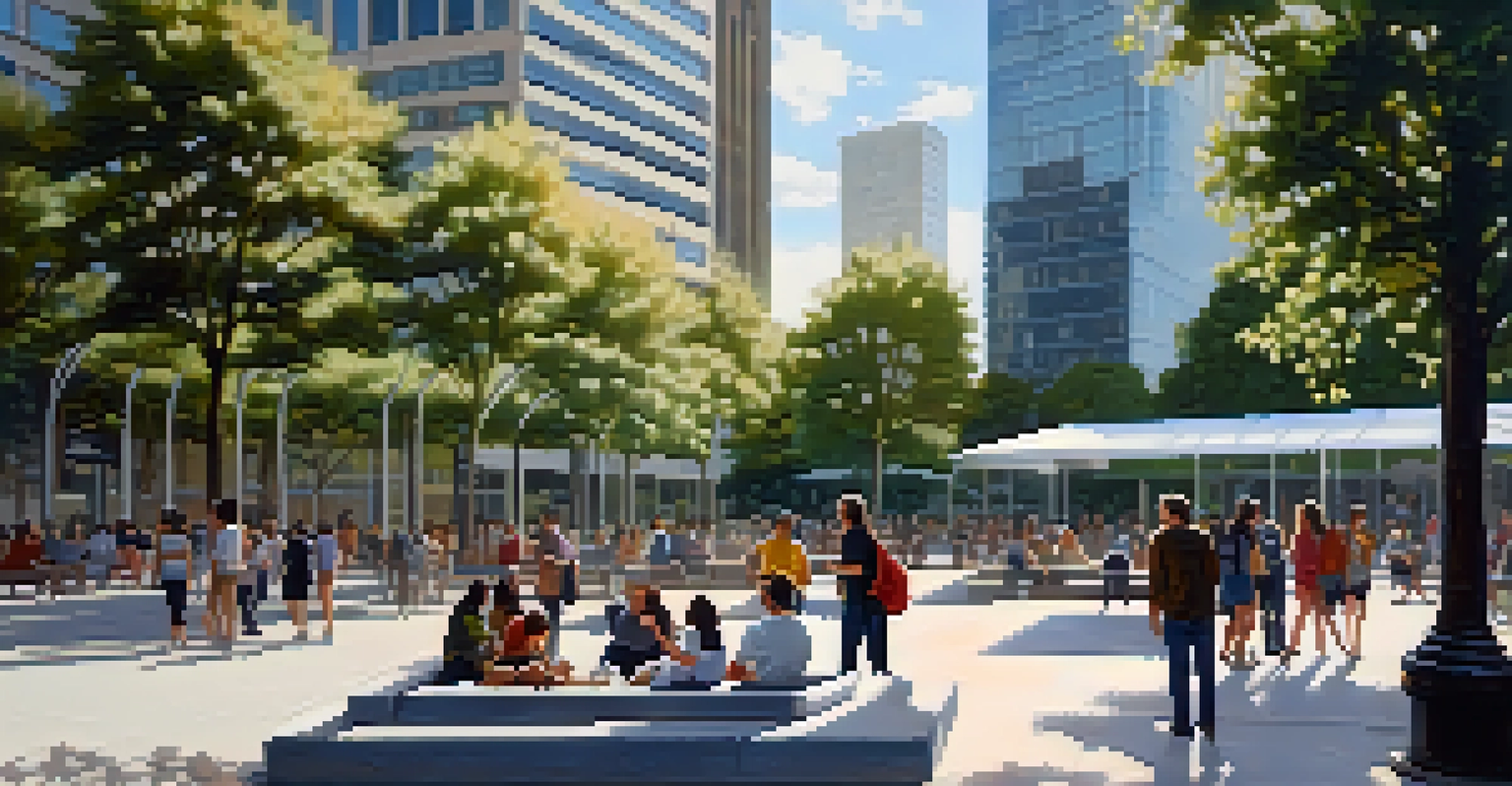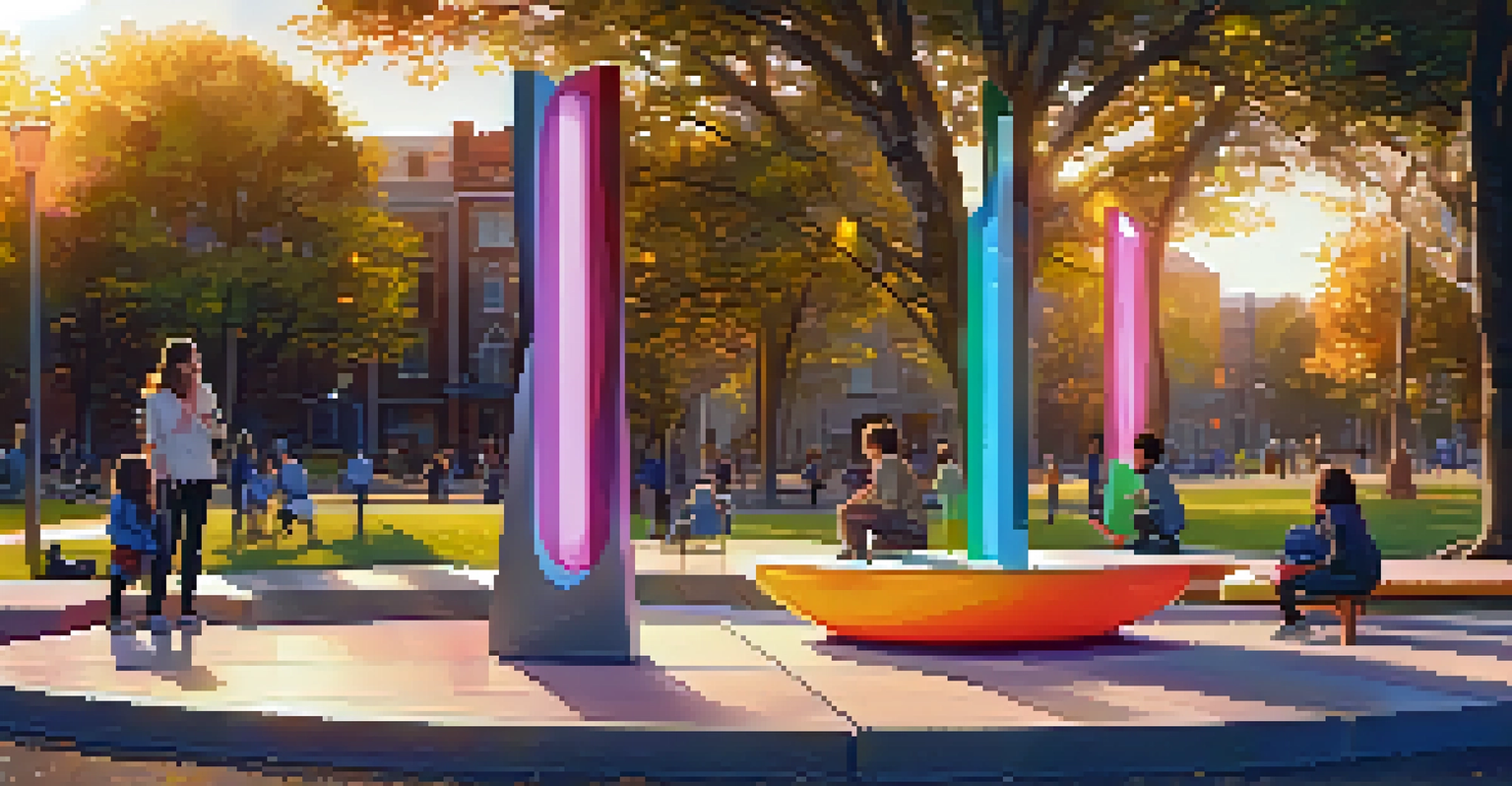Public Art Installations: Transforming Urban Spaces Creatively

Understanding Public Art: What It Is and Why It Matters
Public art refers to artworks that are accessible to the general public, often displayed in outdoor spaces. These installations can take many forms, from murals and sculptures to interactive displays, each contributing uniquely to the community's identity. They serve as a bridge between artists and the public, fostering a sense of connection and belonging within urban environments.
Public art is a way to engage the community, to have a conversation, and to bring people together.
The importance of public art lies in its ability to transform mundane spaces into vibrant cultural hubs. Imagine walking through a drab city street and suddenly encountering a vivid mural that tells a story or a sculpture that sparks joy. Such experiences can change our perception of a place and encourage more dynamic interactions among residents and visitors alike.
Moreover, public art can reflect the local culture, history, and values, creating a sense of pride for community members. By highlighting unique aspects of a neighborhood, these installations can enhance community engagement and participation, making art a vital part of everyday urban life.
How Public Art Influences Community Identity and Pride
Public art installations play a crucial role in shaping a community's identity. They often echo the shared experiences, histories, and aspirations of local residents, becoming symbols of pride and unity. For instance, a public art piece might celebrate a significant historical event or notable local figures, instilling a sense of belonging among community members.

When people feel a connection to the art in their surroundings, it can foster a deeper appreciation for their neighborhood. This sense of pride can lead to increased involvement in local activities, as residents feel more invested in their community's well-being. Art becomes a catalyst for social cohesion, encouraging people to come together and celebrate their shared identity.
Public Art Enhances Community Identity
Public art reflects local culture and history, fostering pride and connection among community members.
Moreover, public art can attract visitors and tourists, enhancing the local economy. When a city is known for its impressive art installations, it draws people eager to experience its culture, thus creating opportunities for local businesses to thrive.
The Role of Artists in Shaping Urban Environments
Artists are essential in the creation of public art, as they bring fresh perspectives and innovative ideas to urban spaces. They often collaborate with local communities to ensure their work resonates with the residents and enhances the environment. This collaborative process not only enriches the art itself but also empowers community members to take part in shaping their surroundings.
Art is not what you see, but what you make others see.
Through their work, artists challenge traditional norms and encourage dialogue about important social issues. For example, an installation addressing environmental concerns can inspire conversations about sustainability, prompting communities to take action. In this way, artists become vital contributors to not just the aesthetic, but also the social fabric of urban life.
Additionally, artists often push the boundaries of creativity, experimenting with materials and techniques that can transform the perception of public spaces. By doing so, they invite people to reconsider what art is and where it belongs, ultimately redefining the urban landscape.
Public Art as a Tool for Urban Revitalization
Public art can serve as a powerful tool for urban revitalization, breathing new life into neglected areas. By introducing vibrant installations, cities can attract more foot traffic, making once-desolate neighborhoods bustling with activity. This transformation not only enhances the visual appeal of a place but can also stimulate economic growth through increased tourism and local business support.
For instance, cities like Wynwood in Miami have seen remarkable transformations through public art. The area became famous for its colorful murals, turning it into a cultural hotspot that attracts visitors from all over the world. Such revitalization efforts demonstrate how strategic public art initiatives can uplift communities and create thriving urban environments.
Art Drives Urban Revitalization
Strategic public art initiatives can transform neglected areas into vibrant cultural hotspots, boosting local economies.
Moreover, revitalization through public art fosters collaboration among city planners, artists, and community stakeholders. This collaborative approach ensures that the art reflects the values and desires of the local population, ultimately leading to a more sustainable and engaging urban landscape.
Challenges and Controversies Surrounding Public Art
While public art can have a profound impact, it is not without its challenges and controversies. One common issue is the question of funding; securing resources for public art projects can be a struggle, often leading to debates about budget priorities. Additionally, community members may have differing opinions on what constitutes 'good' art, leading to conflicts over proposed installations.
Another challenge is the maintenance and preservation of public art. Vandalism, weather conditions, and urban development can threaten the longevity of these installations, prompting discussions about responsibility and care. Cities must create plans that not only support the initial installation but also ensure ongoing maintenance to protect these cultural investments.
Moreover, some public art can provoke strong emotional responses, leading to heated debates over its appropriateness. While this can be seen as a negative aspect, it also highlights the potential of art to stimulate conversation and reflection, reminding us of its power to challenge societal norms.
The Future of Public Art in Urban Development
The future of public art in urban development looks promising, with increasing recognition of its value in enhancing city life. As cities continue to grow and evolve, there is a renewed focus on integrating art into urban planning processes. This shift allows for a more holistic approach to city design, where art is not just an afterthought but a foundational element.
Emerging technologies also play a role in shaping the future of public art. Digital installations and augmented reality experiences are becoming more common, providing innovative ways for artists to engage with the public. These advancements not only enhance the artistic experience but also broaden the accessibility of art to diverse audiences.
Collaboration Shapes Future Art Projects
Involving local communities in public art projects ensures that installations resonate with residents and reflect their values.
Additionally, community involvement in public art projects is expected to grow. As cities recognize the importance of local voices in shaping their environments, more initiatives will likely prioritize collaboration between artists and residents. This trend will ensure that public art remains relevant and reflective of the communities it serves.
Why We Should Advocate for More Public Art Installations
Advocating for more public art installations is essential for fostering vibrant and inclusive urban spaces. These artworks not only beautify our surroundings but also promote community engagement, spark creativity, and encourage conversation. By supporting public art initiatives, we invest in the cultural richness of our cities and enhance the quality of life for all residents.
Moreover, public art can serve as a platform for marginalized voices, allowing underrepresented communities to express themselves and share their stories. This inclusivity is vital for creating a sense of belonging and understanding in diverse urban environments. By advocating for public art, we champion the idea that every voice deserves to be heard.

Ultimately, public art can inspire change and reflection, making it an invaluable asset to urban life. Whether it’s through enhancing community pride or stimulating economic development, the case for more public art installations is clear. Together, we can work towards making art an integral part of our cities.